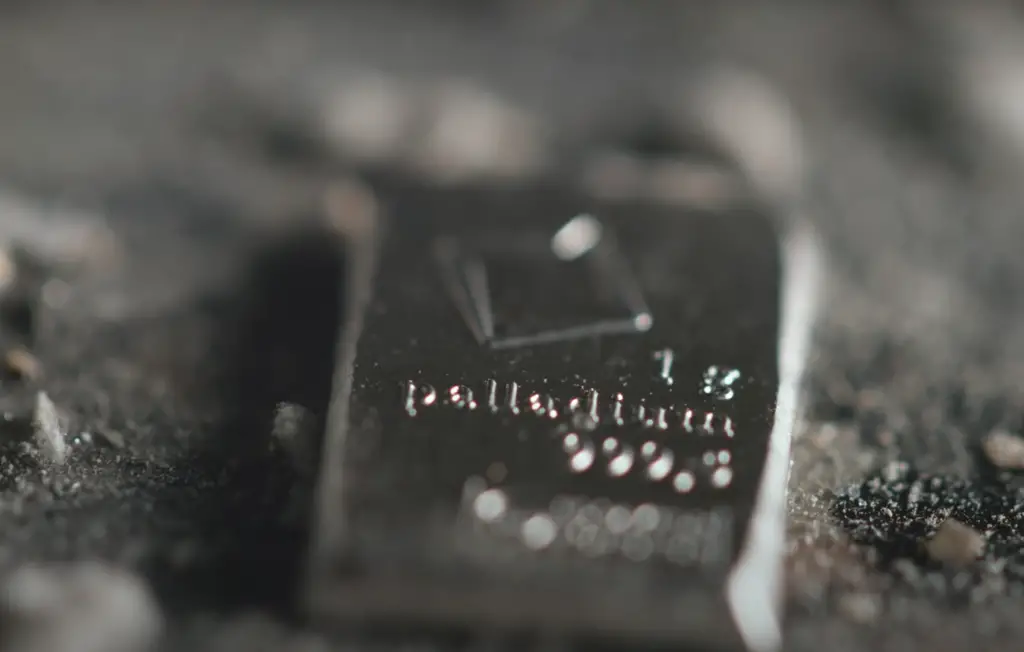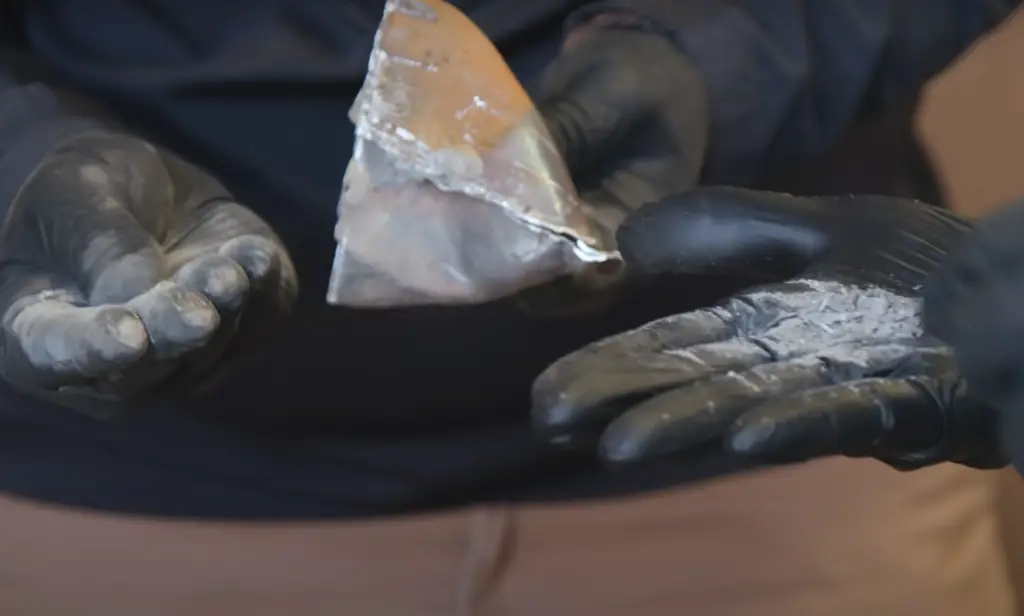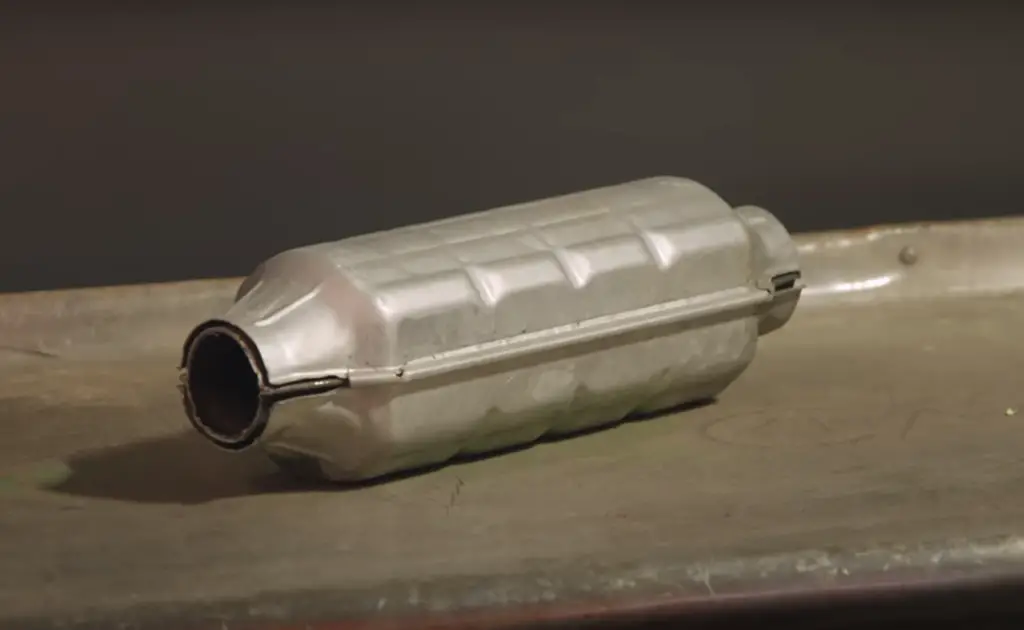As human civilization has evolved over time, our understanding and utilization of various metals found in nature has also advanced. While a handful of these metals, such as Iron, Aluminum, and Copper, have gained immense popularity and utility in our daily lives due to their exceptional properties, there are other metals that remain relatively less known and have not found widespread applications.
In this document, we will delve into a comprehensive discussion of these lesser-known metals, often regarded as the ‘least useful’ in our society. Through a critical analysis of their unique properties, potential uses, and the reasons behind their confinement to niche applications, we aim to shed light on their significance and explore the untapped potential they may hold.
Francium
Francium, a rare and highly unstable metal. With its atomic number of 87, it holds the distinction of being the second rarest naturally occurring element on Earth. Due to its significant radioactivity, Francium finds limited practical applications outside of scientific research.
The scarcity and instability of Francium pose considerable challenges in gathering sufficient quantities for in-depth study. Scientists are driven by curiosity to explore this elusive element, unraveling its unique properties and uncovering potential future applications.

Despite its limited practicality, the study of Francium offers valuable insights into the fundamental principles of chemistry and nuclear physics. Its enigmatic nature continues to captivate scientists and researchers, pushing the boundaries of knowledge in the field.[1]
Protactinium
Protactinium, another intriguing metal on our list, is not only rare but also highly radioactive. This element remained undiscovered for a long time due to its scant presence in the earth’s crust and the intricate extraction process involved. It wasn’t until later that scientists were able to uncover its mysteries.
Primarily used in nuclear reactors, Protactinium plays a crucial role in the generation of nuclear energy. However, its high radioactivity and incredibly long half-life of 32,760 years pose significant challenges in terms of handling and waste disposal. These complexities limit its utility, resulting in its narrow usage primarily within the nuclear industry.
Despite its limited application, Protactinium’s unique properties and the scientific challenges it presents continue to fascinate researchers and fuel ongoing exploration in the field of nuclear science.[1]
Tellurium
Tellurium, yet another fascinating metal in our impressive roster, is a lesser-known metalloid with a distinct silver-white appearance. Despite its relative rarity, this captivating element has found niche uses in the production of certain types of solar panels, where its exceptional conductivity and photoelectric properties make it an invaluable component. Additionally, Tellurium is employed as an alloying agent in steel and copper to improve machinability, enhancing their overall performance and workability.
Moreover, its toxicity when inhaled or ingested poses significant challenges, restricting its broad-scale applicability.Furthermore, the handling and disposal of Tellurium demand specific safety measures to prevent any potential environmental contamination. Therefore, rigorous safety protocols are essential during its production, usage, and disposal. Despite these limitations, the unique properties and applications of Tellurium continue to make it a valuable resource in a few specific industries, where its specialized characteristics are indispensable for achieving optimal results.[1]
Mercury
Finally Mercury, also known as quicksilver, is often regarded as one of the least useful metals due to its high toxicity and general undesirability. This liquid metal, with its distinctive silver appearance, has very limited applications in modern society. Some of its uses include thermometers, dental amalgams for fillings, fluorescent bulbs, and certain types of batteries.

However, due to its toxicity, extreme caution must be exercised when handling Mercury. Its harmful effects on human health and the environment make it impractical for most applications, leading to a decrease in its overall use over time. The need for safer alternatives has further contributed to the decline in the utilization of mercury in various industries.
Despite its limited practicality, the unique properties of Mercury continue to fascinate scientists and researchers. Its ability to form alloys with other metals and its high electrical conductivity make it an intriguing subject of study in materials science and chemistry. Understanding the behavior of this elusive metal has the potential to unlock new insights and applications in the field of scientific research.
These metals, although not extensively utilized due to their distinct characteristics, play vital roles in specific industries. From the highly radioactive Francium, which has a short half-life and is primarily used for research purposes, to the toxic Tellurium, which finds applications in the production of solar panels and thermoelectric devices, these elements contribute to powering our world in ways that may remain largely unknown. As scientists delve deeper into the exploration and discovery of new properties for these elements, they may uncover broader applications and unlock their full potential in the future. In the meantime, it is crucial to prioritize safety when handling these materials to ensure their safe and responsible use in various fields.[1]
Osmium
Osmium is a truly fascinating metal, renowned for its impressive density, which sets it apart as the densest naturally occurring element known to us. With its captivating lustrous, blue-white appearance in its pure state, it captivates the eyes and sparks curiosity. This remarkable metal holds a distinguished position in the periodic table as part of the platinum group. However, despite its remarkable properties, Osmium faces certain challenges that limit its widespread applications. It not only boasts scarcity and high cost but also poses toxicity risks in its powdered form. Nonetheless, osmium finds its niche in specific applications where extreme hardness is demanded, such as the tips of fountain pens and record player needles. These precise applications highlight its unique capabilities. Though osmium may not witness extensive use, it serves as a poignant reminder that every element, no matter how seemingly “useless,” holds a distinct place and value in our world, contributing to the marvels of nature.[3]
Iridium
Iridium, another member of the Platinum group metals, is notably the most corrosion-resistant metal found on Earth. It shines with a silvery-white luster and possesses an extraordinarily high melting point, surpassing even that of Platinum. Its exceptional durability and resistance to oxidation make it a valuable material in various industries. However, similar to Osmium, Iridium’s general usage is hampered by its scarcity and subsequent high cost, limiting its widespread applications.

Despite these challenges, Iridium finds its niche in specific fields. Its excellent electrical conductivity and resistance to wear and tear make it ideal for electrical contacts, while its high melting point makes it suitable for spark plugs that endure extreme temperatures. These applications showcase the versatility and adaptability of this extraordinary metal.
As we continue to push the boundaries of scientific understanding, the potential for future applications of Iridium remains vast. Its unique properties contribute to the diversity and complexity of the elements, inspiring curiosity and exploration. Who knows what new discoveries and innovations lie ahead, unlocking even more possibilities for this remarkable metal?[2]
FAQ
What are 3 useful metals?
Indeed, while some metals may seem less useful or practical due to their unique properties and limitations, there are certainly others that are crucial in a variety of industries due to their versatility and advantageous characteristics.
For instance, Aluminum, lightweight yet robust, is a widely used metal across various industries. It’s highly resistant to corrosion and highly conductive, making it a popular choice for electrical applications. Moreover, its recyclability and abundance make it a sustainable choice.
Next up is Iron, an essential component of steel, which forms the backbone of modern architecture and infrastructure. Its magnetic properties also make it invaluable in the creation of electrical appliances and technology.
Lastly, Copper is another highly useful metal noted for its excellent conductivity, malleability, and resistance to corrosion. It’s extensively used in electrical wiring, plumbing, and in the creation of alloys like bronze and brass. Despite their abundant applications, the proper disposal and recycling of these metals should also be a priority to limit their environmental impact.
What are poor metals?
Poor metals, also known as post-transition metals, are a fascinating group of elements located in the p-block of the periodic table.
Despite the term “poor,” which refers to their lower melting and boiling points, as well as their softer nature compared to transition metals, these metals are far from being less valuable or useful.In fact, their unique characteristics make them ideal for specific applications. For example, Lead, with its exceptional density and corrosion resistance, finds wide usage in batteries, while tin, renowned for its low toxicity and malleability, is commonly employed in the production of cans and as a protective coating for other metals. Moreover, poor metals are often less shiny than other metals, which adds to their distinct aesthetic appeal.
By exploring the properties and applications of these lesser-known elements, we gain a deeper understanding of the diverse and versatile nature of the periodic table.
Which metal has the lowest work function?
Cesium, known for having the lowest work function among metals, possesses a remarkably low work function of just 2.1 electron volts. This means that it requires a comparably minimal amount of energy to extract an electron from it. This unique characteristic makes cesium an ideal choice for various applications, particularly in photoelectric cells.

When exposed to light, Cesium effortlessly emits electrons, making it highly effective in harnessing and converting light energy. However, despite its exceptional properties, Cesium’s reactivity and rarity limit its widespread use and availability, making it a fascinating yet challenging element to work with in many industries.
Is Silver a poor metal?
Silver, with its stunning lustrous beauty and rich historical significance, stands apart from the category of “poor metals”. While it does share a few similarities with these metals, such as exceptional conductivity and malleability, it possesses distinct characteristics that set it apart. When referring to “poor metals,” we typically consider those with lower melting and boiling points, a softer nature, and a less shiny appearance compared to transition metals. However, Silver defies these conventional traits. It boasts a high melting point, remarkable hardness, and a renowned reputation for its dazzling appearance. Moreover, Silver holds significant value due to its scarcity and its extensive range of applications, ranging from exquisite jewelry and elegant silverware to vital electrical contacts and even the world of photographic film. While it may not be as widely used as some metals in certain industrial applications, Silver’s remarkable properties and unparalleled versatility firmly establish it as a far cry from being a “poor” metal.
Which metal has the lowest density?
The title of the metal with the lowest density goes to Lithium. It’s an alkali metal, usually found in nature not in its pure form but in ionic compounds due to its highly reactive nature.
Despite its low density, Lithium has a multitude of uses.One of the primary applications of Lithium is in rechargeable batteries. Its lightweight property and high energy density make it a critical component in batteries used in various devices, ranging from mobile devices to electric vehicles. The demand for Lithium-Ion batteries continues to rise as the world transitions to a more sustainable and clean energy future.
In addition to its role in energy storage, Lithium and its compounds have significant uses in the field of mental health. Lithium compounds, such as Lithium Carbonate, are widely prescribed as mood stabilizers in the treatment of bipolar disorder. These medications help regulate mood swings and prevent episodes of mania or depression, providing much-needed relief to individuals with this condition.
So, while Lithium may be light in terms of density, its impact in our world is anything but. From powering our devices to improving mental well-being, Lithium plays a crucial role in various aspects of modern life. Its unique properties and versatile applications continue to drive innovation and enhance the quality of life for many.
What is least metallic?
The title of the “least metallic” metal typically goes to the post-transition metals, also known as poor metals. Despite being categorized as metals, they exhibit properties that are intermediate between transition metals and nonmetals. For instance, they have lower melting and boiling points, are softer, and generally less shiny compared to their transition metal counterparts. However, as we’ve seen earlier, being “least metallic” does not equate to being “least useful.”

These metals have unique properties that make them ideal for specific applications. For example, Lead’s high density and low reactivity make it ideal for use in batteries, while Aluminum’s light weight and resistance to corrosion are highly valued in the transport and construction industries. In the grand scheme of things, every metal, regardless of where it falls on the ‘metallic’ scale, has a unique role and value in our world.
What is Titanium used for?
Titanium, a truly remarkable metal, holds a significant place in various industries owing to its impressive properties. Renowned for its exceptional strength, light weight, and remarkable resistance to corrosion, Titanium finds extensive application in aerospace engineering, playing a vital role in the construction of aircraft structures and engines. Beyond the realm of aviation, this versatile metal also finds utility in the medical field, where it is utilized for surgical implants such as hip and knee replacements, thanks to its excellent biocompatibility. Furthermore, due to its exceptional resistance to the corrosive effects of seawater, Titanium is employed in marine applications, including the construction of propeller shafts. Despite its relatively higher cost compared to other metals, the enduring durability, lightweight nature, and non-toxic properties of Titanium continue to make it the metal of choice for a myriad of applications, setting it apart from the rest.
Useful Video: Reactivity Series of Metals | Environmental | Chemistry | FuseSchool
Conclusion
In conclusion, determining the “least useful” metal is a complex and nuanced task. The utility of a metal is highly dependent on its specific application and the requirements of that particular field. From the lightweight and versatile properties of lithium to the highly reactive nature of cesium, each metal has found its niche in our world and contributes significantly to a wide range of industries.
Even metals that are often categorized as “poor metals” possess unique characteristics that make them valuable in certain contexts. These metals have proven their worth in fields such as technology, healthcare, and manufacturing, where their distinct properties are harnessed to achieve remarkable advancements. Moreover, metals like Silver and Titanium, while not traditionally considered “poor,” offer a multitude of uses due to their exceptional properties, further highlighting the diverse contributions of metals in both industry and everyday life.
Therefore, it is evident that the value of every metal is ultimately determined by how well its properties fulfill the specific needs of its applications. Regardless of their physical characteristics or their position on the periodic table, all metals play an integral role in shaping our world and driving innovation forward. It is through the collective efforts and contributions of these metals that we continue to advance and discover new possibilities in various fields, ultimately benefiting society as a whole.
References:
- https://markhammetals.com/which-metals-are-the-least-useful/
- https://www.lenntech.com/periodic/elements/ir.htm
- https://www.britannica.com/science/osmium






